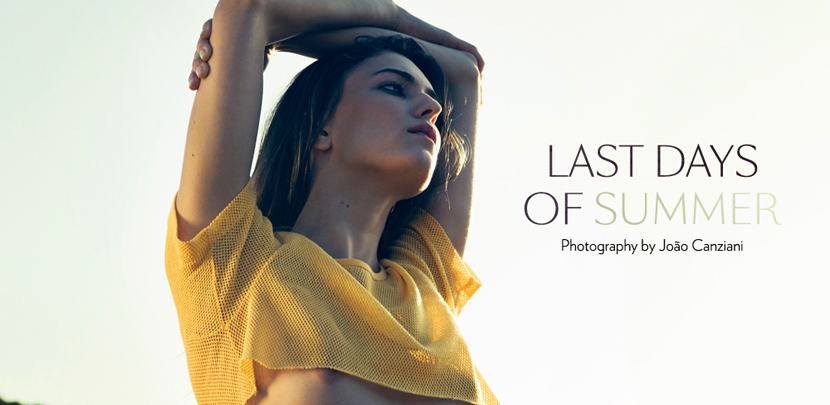

Jefferson Hack interviews three influential designers for a unique series of live events at Apple stores worldwide. Photography via Dazed & Confused.


In the midst of the star-studded turmoil of Fashion Week,
Dazed & Confused magazine has created a series of events aimed at bringing the fashion-adoring public to meet directly some of the world’s most well-regarded fashion designers. Following the fashion week schedule in New York, London, and Paris, Jefferson Hack (the Editorial Director and co-founder of Dazed & Confused magazine) will speak with one designer in each fashion capital.
Kicking off with Adam Kimmel in New York tonight, London’s event will host Jonny Johansson (co-founder of Acne) and Gareth Pugh will speak in Paris. The events will be recorded and made available to download as a podcast from the iTunes store. Check
here for more details.


Photography by Mario Tama, courtesy of Umbrage Editions.


In the immediate aftermath of Hurricane Katrina, New Orleans became a magnet for photographers, journalists, and 24-hour media attention. But not too many of them stuck around for the slow, problem-addled rebuilding process, and of those who did, few have captured the city and its embattled residents as poignantly as Getty Images photographer Mario Tama. In his tireless efforts to document the unprecedented levels of destruction, Tama has amassed a collection of images unique in the way in which they showcase the small moments of hope and resilience that accompany tragedy and frustration.
On the heels of the hurricane’s fifth anniversary, Tama has collected his award-winning snapshots in
Coming Back: New Orleans Resurgent, featuring photos that highlight both the ongoing need for recovery and the unbelievable tenacity of the city’s residents. The book, which also has an introduction courtesy of Anderson Cooper, was released this past weekend and is a sharp reminder of the power of photojournalism done well.
In the meantime, Tama’s work is also being showcased in twin exhibits in New Orleans and in New York at Brooklyn’s
Umbrage Gallery — be sure to catch it before it closes this Wednesday. A portion of proceeds will go toward New Schools for New Orleans, a non-profit that has been instrumental in updating the city’s public education system.

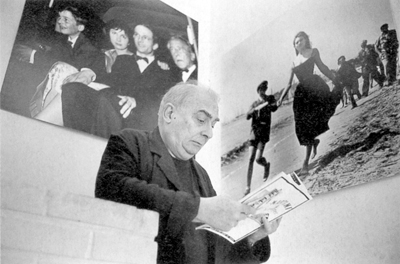


Claude Chabrol, a founder of the French New Wave movement in cinema, died Sunday at age 80. Though not as well known as his fellow New Wave auteurs, Chabrol produced movies the way Philip Roth produces novels — that is to say, at an astonishing pace and with an astonishing level of quality and originality. Le Beau Serge, released in 1958 (two years before Godard’s Breathless) is arguably the first movie of the French New Wave. Often overlooked, or worse, dismissed as mainstream — Hitchcock was perhaps his greatest influence — Chabrol’s films were always provocative, thrilling films that resisted the blanket, scornful term “thriller”. Chabrol’s best films — the greatest of which was Le Bucher — erased the boundary between victim and assailant, exposed the tension underlying seemingly idyllic families and towns, and skewered bourgeoise hypocrisy. His final film, Bellamy, was released in France in February of last year.

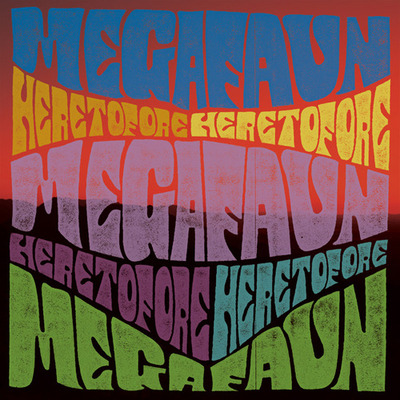
Hometapes

The North Carolina roots of brothers Brad and Phil Cook should explain the twang that emanates out of their “mini-album” but
Heretofore is just as steeped in the ethereal folk of third member Joe Westerlund’s native Eau Claire, WI — home to like-minded songwriters Justin Vernon of Bon Iver and Peter Wolf Crier of Peter Pisano. Call it a difference of two halves.
Heretofore’s opening title track starts slow but builds to a charging stomp, giving way to the breezy AM rock of “Carolina Days”. “Eagle” and “Volunteers” both come straight off the back porch, slip-slidin’ on simple descending guitar riffs (the former) and Appalachian banjo lines (the latter). By the time “Comprovisation for Connor Pass” — an eleven-minute foray into some deep, stoned abyss — rolls around, Megafaun’s moved from the porch back to Eau Claire. “Comprovisation” and harmony-heavy closer “Bonnie’s Song” are decidedly more laid-back and somehow even more beard-friendly than the front-end of this sufficient holdover to an unnamed LP set for release later this fall.
Audio clip: Adobe Flash Player (version 9 or above) is required to play this audio clip. Download the latest version here. You also need to have JavaScript enabled in your browser.
Buy Megafaun records at Other Music or iTunes. Heretofore will be released September 14. After the jump, check out an intimate live performance of “Bonnie’s Song”.
(more…)

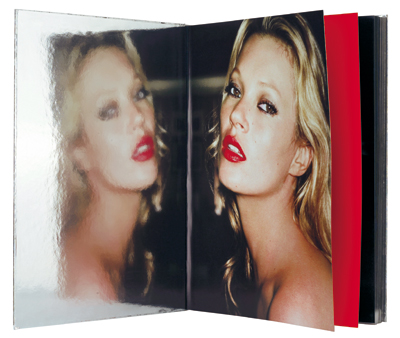
Photography by Mario Testino (Click images to enlarge)


It is no secret that Kate Moss is the most successful supermodel. The reason for her success maybe less obvious and hard to pin down, but the main is pretty simple — Moss is a blank canvas, and this is the supreme quality of a model. She adapts looks like Madonna adopts stage personalities. Upon this blankness, the designer, the make up artist, the photographer can layer whatever characters they choose.
Mario Testino is one of those photographers. To celebrate the model, he is releasing a book titled Kate Moss by Mario Testino (Taschen, $700) later this month. The book is appropriately swathed in luxury like Moss in designer clothes — the edition is limited to 1,500 copies, each numbered and signed by Testino himself. Half of them will be distributed through Taschen flagship stores, half some will go online.
The silver tome, encased in pink plastic, is gorgeous. Its 230 pages contain 100 photos of Moss ranging from 1993 to 2010, which subtly lets you know that Moss just doesn’t age. Testino is not only a long time collaborator, but also Moss’s friend and the images reflect that. The pictures range from the most intimate — Kate’s shoe closet, who doesn’t want to see that?! — to the most glamorous. She is depicted, alternately, naked or holding her daughter, glammed up or in jeans, vulnerable or impenetrable. Many of the photos are being published for the first time, and the book certainly makes for a beautiful homage to a beautiful icon.
(more…)
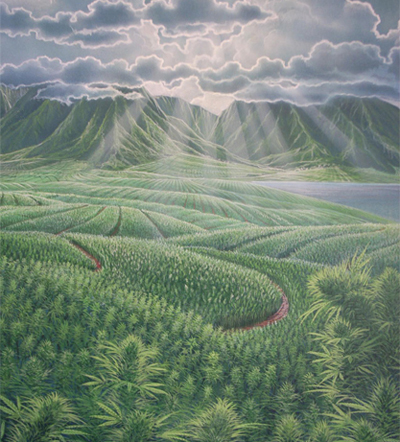
Hemp Fields, Richard Fields. 1995. Photography courtesy of Puka Puka. (Click images to enlarge)

“The Hawaiian spirit…was the ambient culture that we walked into and sucked up,” says artist and activist Joana Varawa of Hawaii in the 1960s. The bohemians, hippies, artists, beatniks, explorers of consciousness — there are too many words for them, and none come quite close enough to the truth — came to the island for various reasons: art, nature, the surf, to escape an outstanding warrant for one’s arrest. And the pilgrims found what was at that time a veritable paradise, relatively unspoiled by the touch of Western civilization. Ratified as a state in the latter half of 1959, Hawaii in the 1960s reflected the counterculture’s utopian ideals: a place to explore one’s inner and outer worlds amidst the otherworldly sensation of “hot lava under foot, volcanoes over head”.
FAR ART, the unprecedented exhibition at Puka Puka boutique and gallery in Maui, opened this summer on the 40th anniversary of “Rainbow Bridge”, Jimi Hendrix’s penultimate concert. The exhibition includes works by still-renegade artists such as William Ballantine III (aka TABULATOR), who smoked a joint with Hendrix himself and is currently conducting experiments in “cosmic consciousness”. Also John Schofill (creator of the original, iconic sign for Rainbow Bridge), early animal welfare activist Joana Varawa, and John Severson, the founder of Surfer Magazine.
After the jump, find our interview with Nathan and Alizé, the gallery founders and exhibition curators, about the “super-cosmic” way in which the show came together, the appeal of Hawaii, and what, exactly, the term “rainbow bridge” means.
(more…)
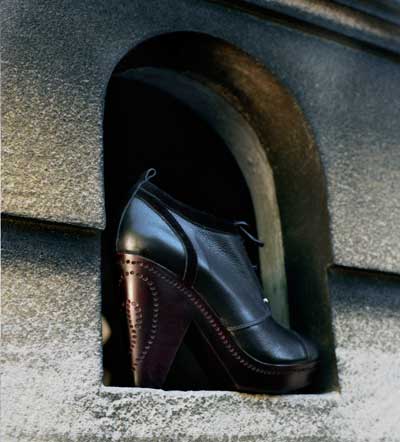
Photography by Estelle Hanania

The French fashion line
Dévastée habitually provides a welcome interruption each Fashion Week in Paris with beautiful allusions to death, suicide and a Gothic obsession with the link between love and mortality. Co-founders Ophelie Klere and Francois Alary started the line in 2004 with, according to them, “various little depressing things. The darker the better.” The unique label has carved a growing niche for itself among the mammoths of Parisian fashion houses; Klere and Alary declaring themselves initially “not that interested in fashion” while demonstrating the clarity of their own vision.
The pair are not averse to collaboration, as Dévastée’s Spring/Summer 2010 collection demonstrates. French independent shoe designer
Marion Hanania introduced her own line of shoes eight years ago at the young age of 22, and became acquainted with Klere and Alary when she was selected for the Fashion Festival in Hyeres in 2005. Five years later, Hanania designed shoes for Dévastée’s 2010 S/S collection.
Hanania tells us, “I wanted the shoes to stand alone, as a real collection, and not only be an accessory to a clothes line. Still, I wanted them to be obviously recognizable as Dévastée shoes.” Inspired by the line’s black-and-white look as well as its emphasis on cut-outs and heavy prints, Hanania created a line of shoes that incorporated her own aesthetic — “tightly linked to drawings”, as she puts it — to create a singular collection of shoes that beautifully displays both Hanania’s careful attention to detail and Dévastée’s sharp, dark designs.
(more…)

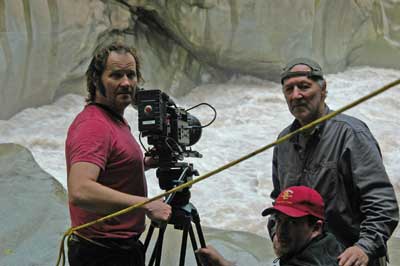
Werner Herzog directing My Son, My Son, What Have Ye Done? All Photography by Lena Herzog. Courtesy of Absurda. (Click images to enlarge)



Ever since he stole his first film camera, Werner Herzog has been making strange, brilliant films that blur the line between fact and fiction. His features and documentaries explore grand, elemental, even primeval themes — the nature of madness, the chasm between nature and civilization, and man’s mad ambition to conquer a hostile, implacable natural world. Over the past forty years Herzog has created a body of work that is arguably as powerful and durable as any contemporary filmmaker.
His 2009 film
My Son, My Son, What Have Ye Done? — a film loosely based on the story of Mark Yavorsky, a grad student who, inspired by Aeschyles’
Oresteia, murdered his mother with a saber — comes out on DVD next month. PLANET spoke with Herzog about the madness he attracts, his cinematic vision, and his relationship with Roger Ebert.
Did you ever meet Mark Yavorsky?
Mark Yavorsky was found incompetent to stand trial and he was put away in a maximum-security mental institution, but he was released after eight years. And I met him at a trailer park. He lived in a trailer park, near Riverside, CA. …. His trailer was filled with strange memorabilia. In one corner he had a poster of Aguirre: The Wrath of God and there was a shrine built and a candle burning in front of it. When I walked in, I shrank back and I thought, “Oh, get yourself out of here. Stay out. Stay away from the man.”
(more…)
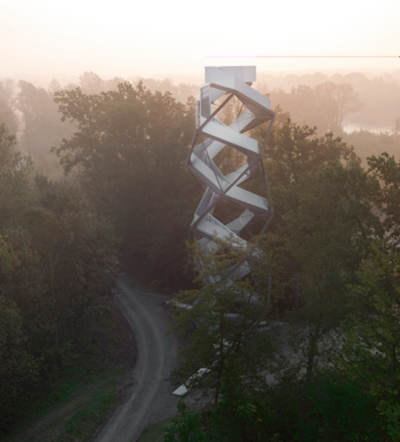
Photography courtesy of Terrain:Loenhart&Mayr (Click images to enlarge)

Marking the border between Austria and Slovenia — once “a public-excluded security zone along the former Iron Curtain” — rises a new observation tower along the winding path of the river Mur.
Murtum, by the Munich-based architectural firm
terrain:loenhart&mayr, is sequestered amidst what is today a quiet, lush nature preserve. Supported by Naturschutzbund Styria (Styrian Nature and Biodiversity Conservation Union), the tower was originally intended as a simple marker for the European Green Belt (a conservation project run by the World Conservation Union). Ultimately, however, this tower is an architectural achievement and testament to the potential for modern design to engage in elegant, equal dialogue with the wild forms of nature.
The tower’s design mimics a tree: the lower part is thick and sturdy like a trunk, and the thinner steel tubes that support the pinnacle represent a tree’s delicate uppermost branches. A structural challenge for its engineers, the massive form sways softly as people climb to the top. Clad with aluminum, the shiny structure reflects both the changing colors of the sky above and the gray riverbed that flows beneath it. Altogether, despite (or perhaps because of) its sharp, metallic form and material, the subtle geometry and reflective quality of
Murtum proves that manmade structures can, in fact, enhance our experience of the natural world.
(more…)







 Facebook
Facebook Permalink
Permalink Digg
Digg Reddit
Reddit LinkedIn
LinkedIn StumbleUpon
StumbleUpon Tumblr
Tumblr












